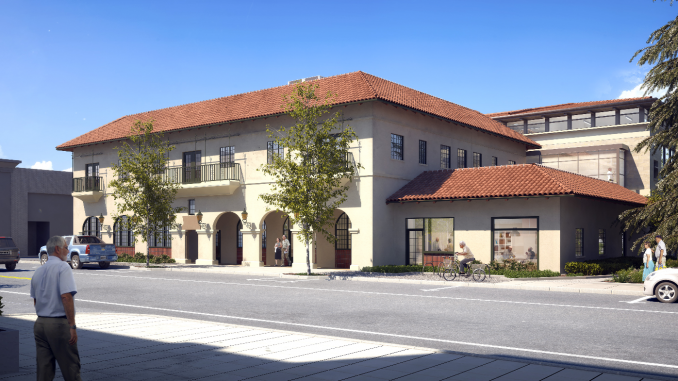
BY ALLISON LEVITSKY
Daily Post Staff Writer
Palo Alto City Council took action last night (May 29) to help fund multimillion-dollar renovations for the senior services nonprofit Avenidas and the Junior Museum and Zoo — but not without some debate about city spending.
The council voted 7-2, with Vice Mayor Eric Filseth and Councilwoman Lydia Kou dissenting, to put almost 11,700 square feet of unused development rights on the market for other developers to bid on, starting at $275 per square foot.
The square footage, which is expected to bring in $3.21 million, comes from two city-owned buildings: the historic Police and Fire Building where Avenidas is on a 50-year, $1-per-year lease at 450 Bryant St., and the College Terrace Building at 2300 Wellesley St., home to the College Terrace Library, the College Terrace Children’s Center and Mayfield Park.
The developers who buy it will be allowed to tack more square footage onto real estate elsewhere in the city, where zoning restrictions would otherwise limit them. Council voted in 2015 to donate $5 million to Avenidas for its $18 million renovation, $2.5 million of which came last month from the fees that real estate developers pay to fund city community centers.
The other $2.5 million will come from the sale of the development rights that council set into motion last night.
Monetizing zoning rights
Filseth said he opposed the practice of selling the transfer of development rights, which he said was “using zoning exemptions as currency.”
“It’s undisciplined,” he said, arguing that if the city wanted to fund something, it should find a way to pay for it.
Councilman Adrian Fine defended the practice.
“These are actually perfect ways to fund services,” Fine said. “New buildings, new development — yes, new offices — actually fund the services that we love in this city.”
Councilwoman Karen Holman had taken credit for introducing the practice several years ago, reasoning that if the city allows private entities to benefit from selling development rights, the city government should be allowed to do the same.
Kou said she also opposed the sale of development rights and said she thought the design choices planned for the Avenidas building “desecrated” the historic site.
Spending process criticized
During the discussion, Holman laid into city employees for presenting infrastructure projects in isolation, without the context of other infrastructure priorities. The issue has been brought up before, including by Holman and councilmen Greg Tanaka and Tom DuBois.
“We’re kind of, like, being spoon-fed our way into greater and greater debt and greater and greater impacts on our infrastructure reserves, or maybe our general fund,” Holman said. “This council is not being provided the opportunity to set priorities.”
The city is currently considering putting a hotel tax increase on the November ballot and has a considerable list of infrastructure projects to complete, including a new police building, a bike and pedestrian bridge over Highway 101 and a parking garage in the California Avenue business district.
Tanaka taken aback
Tanaka said he was “flabbergasted” that the city had started to poll residents on their appetite for a hotel tax when the city could afford to pay for all these projects.
But Chief Financial Officer Lalo Perez said the city is $76 million in the hole for the infrastructure plan, and that the budget only appeared to be balanced when accounting for planned revenues from some unbuilt Marriott hotels on San Antonio Road.
“If those hotels were to come in and fulfill their projected revenues, we could balance the budget, but that’s a big if,” Perez said.
In a second motion last night, council voted 8-1, with Kou dissenting, to give another $1 million to the Junior Museum and Zoo for its forthcoming two-year renovation at 1451 Middlefield Road. The city has already given $7.2 million to the project.
Peery family compared to Lucie Stern
The contribution, along with $1 million from the Friends of the Junior Museum and Zoo, will pay for the netting of the zoo and treehouse, which was previously removed from the project plans but later added back by $15 million donor Dick Peery.
Holman thanked Peery for the contribution, and noted that his family’s contributions to a number of other projects made them “the closest we have had ever to a Lucie Stern in this community.”
Stern, known as Palo Alto’s “fairy godmother,” inherited her wealth from her uncle Levi Strauss and made many donations to the city, including funds that built the Lucie Stern Community Center, the home at 533 Forest Ave. for the Palo Alto Society of the Blind and the Bird Sanctuary at the Baylands. She died in 1946 at age 74.
Mayor Liz Kniss also thanked Peery and noted that $15 million is the largest individual donation the city has received for a facility, noting that for a city with so many wealthy residents, it’s surprising there haven’t been others.
“We have a great many wealthy people in our community and no one has stepped forward with $15 million,” Kniss said. “Other communities have had far more contributions from individuals than we have.”



